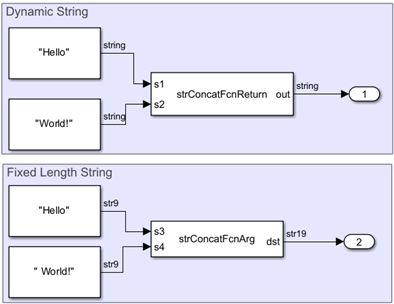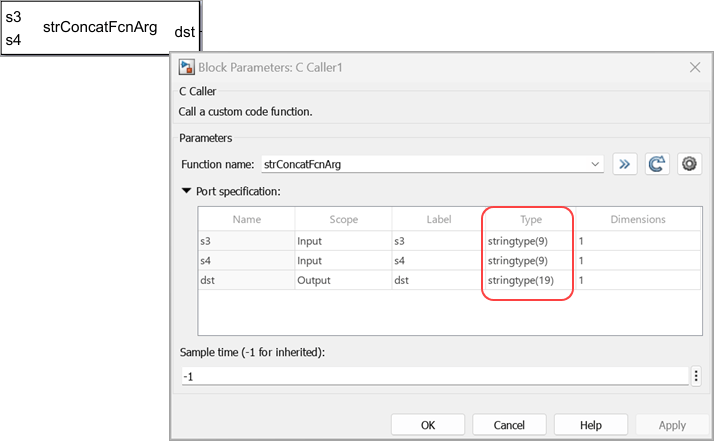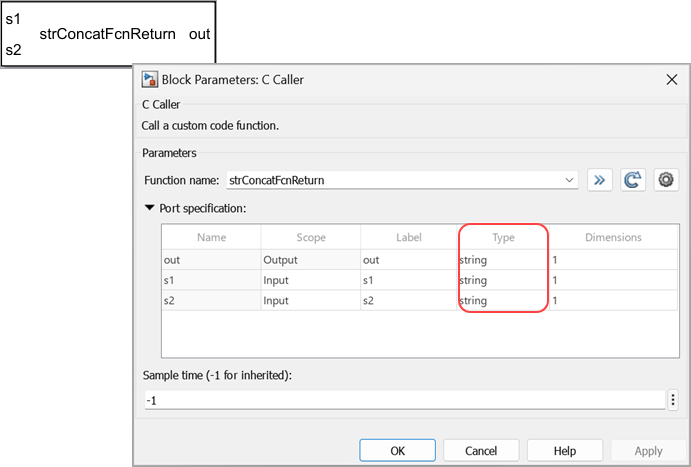Use Simulink Strings for C Caller Block
This example shows how to use fixed length and dynamic Simulink® strings for a C Caller block. In this example, the block calls a C function which declares input and output using C strings (char* or char[ ]). The C Caller block receives and outputs Simulink® strings at its input and output ports, respectively.
Open the model that uses simulink strings for block ports using C strings.
mdl = "SimulinkStringCCaller.slx";
open_system(mdl)
This model uses the following C string prototypes.
char [10] :
void strConcatFcnArg(const char s3[10], const char s4[10], char dst[20])
char* :
const char* strConcatFcnReturn(const char* s1, const char* s2);
Fixed Length String
The blocks enclosed in this component calls the strConcatFcnArg function. The C Caller block receives a fixed length Simulink® string at its input ports and outputs the concatenated string. To configure the block for Simulink® strings, in the Port specification table in the Block Parameters dialog box, set Type to stringtype(maximum_length) for each input and output port.
Simulink automatically accounts for the ending null character (\0) for C strings. As a result, the maximum length of the Simulink string you can use is n for a C string of length n+1. For more information, see Simulink Strings and Null Characters.
Here, in this model, a fixed length Simulink string of type stringtype(9) is used for input C string char s3[10].

Dynamic String
The blocks enclosed in this component calls the strConcatFcnReturn function. The C Caller block receives a dynamic Simulink® string at its input ports and outputs a concatenated string. To configure the block for Simulink® strings, in the Port specification table in the Block Parameters dialog box, set Type to string for each input and output port.

Run Simulation and Log Output Data
Run the simulation and log the output data in a Simulink.SimulationOutput object.
out = sim(mdl);
You can access the logged data using dot notation.
ConcatFcnReturnOutput = out.yout{1}.Values.Data;
ConcatFcnArgOutput = out.yout{2}.Values.Data;